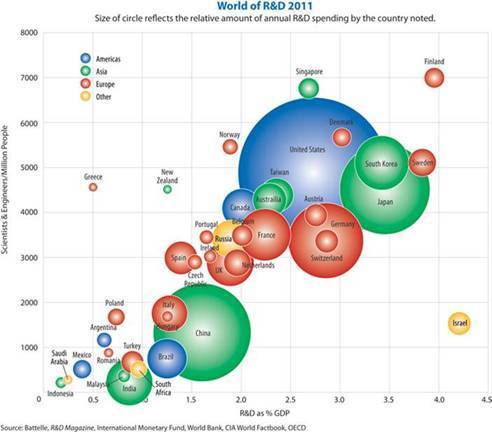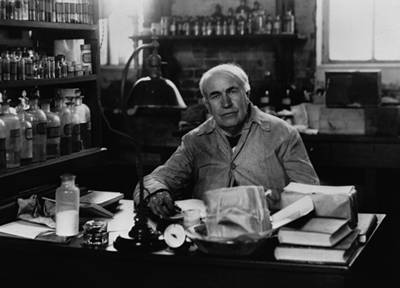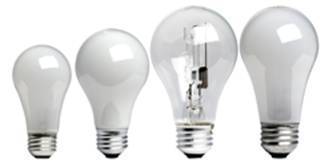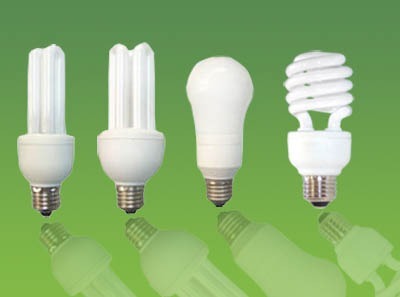Harry T. Roman's Blog, page 24
May 28, 2013
Edison, The Original Ninja Innovator
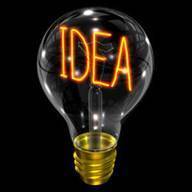
Fox News recently described Thomas Edison as a ninja innovator, one who set tough goals and achieved them through unconventional and uncompromising marketing efforts. No less is required of today’s innovators as they struggle to keep pace with fierce global competition.
Edison had the unique ability to imagine an alternate future, a different world in which to live; and then create products and industries to sustain that vision. Consider how his major inventions changed the world…..phonograph, motion pictures, and the electric light bulb/power industry. Today these industries are the bulwark of our modern society, and the digital economy that has developed around them. It was Edison’s imagination and drive that made that alternate future come alive.
Most folks associate the bright idea as the “Aha” moment, and usually recognize the brightly burning light bulb as the symbol of a great new idea. It has become a kind of universal image for invention and innovation.
While bright new ideas are important, what is more important is transforming those ideas into concrete products and services, things that bring real value to the world, create jobs, and contribute to economic progress. This is the realm of Thomas Edison and what he believed:
“I have more respect for the fellow with a single idea who gets there than for the fellow with a thousand ideas who does nothing.”
It’s very much like the old adage, “ideas are worth a dime a dozen”. The making of an actual product/service adds the real value. Getting an idea to market is the reward. Edison knew this well. At the height of his industrial enterprise, he had over 10,000 employees to pay every week. You cannot issue paychecks on ideas. Something must have been manufactured and sold.
“The value of an idea lies in the using of it.”
His life was a constant challenge to move quickly from ideas to practical application. In four simple principles, Edison captures his ninja-like philosophy:
Think out of the box
Be entrepreneurial-take risks
Fail your way to success
Success demands that you improve your products
Lest there be any doubt, consider that Edison has been dead since 1931, and the products and technology he developed are still responsible for about 10% of our national economy—about $1.5 trillion of lasting annual economic value that has come down through the years to us. It has been estimated his work is responsible for one-fourth of all the jobs in the world. What is the largest enterprise in the American economy? The oil companies? Hand-held telecommunication devices? Neither! It is the national R&D industry..another direct descendent of Thomas Edison…the man who made corporate R&D the powerhouse for turning raw ideas into commercial new products. In 2012, the R&D industry was over $435 billion a year. That’s what ninja’s can accomplish.
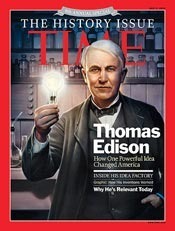
Innovate like a ninja … innovate like Thomas Edison!
“I find out what the world needs. Then I go ahead and try to invent it.”
Time® is a registered trademark of Time Inc.
May 20, 2013
Third Annual Thomas Edison Invention Challenge a Big Success!
Twenty-seven teams of excited students ranging from 6th grade to high school competed in the third annual Thomas Edison Invention Challenge. Held on the campus of New Jersey Institute of Technology [NJIT] on Saturday, May 11th, this alternate energy technology themed competition capped 6 months of work by the student teams. Teams from all over northern and central New Jersey got up bright and early to bring their inventions to NJIT. Groups of judges fanned out and examined each team entry and interviewed them to learn the specifics of their creations. Here below are photos and explanations of the winning entries and teams.
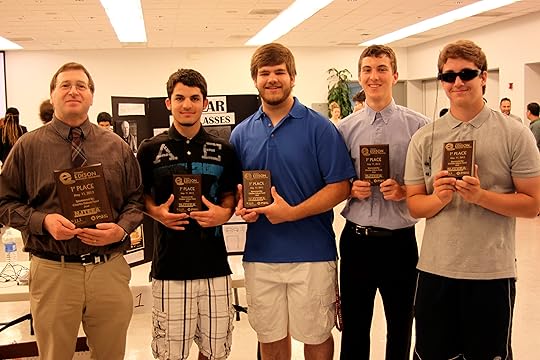
1st Place
“Waldwick Warriors”
Waldwick HS
Invented solar/USB sunglasses
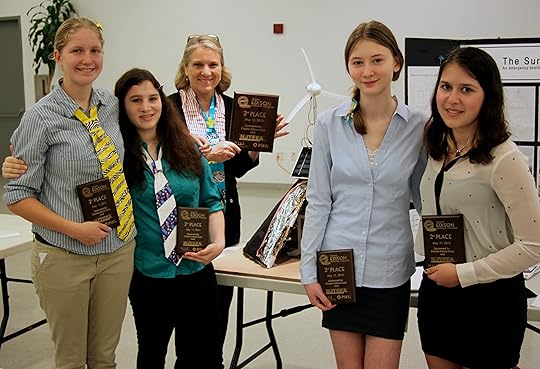
2nd Place
“Team Tesla”
New Providence HS
Invented an emergency shelter for disaster relief
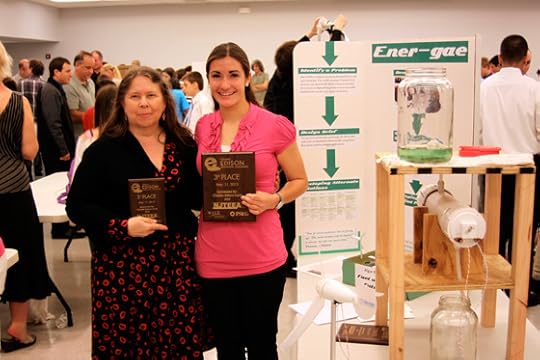
3rd Place
“Ener-gae”
Howell HS
Invented a source of biofuels derived from algae farms
Two Honorable Mention awards were also made.
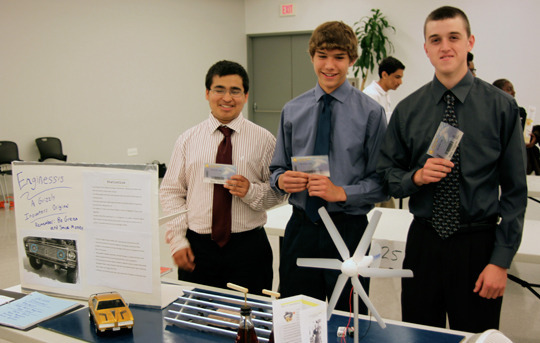
Honorable mention #1
“Grizzly Innovators”
High Point RHS
Invented a turbine system that would mount to the grill of a truck and generate energy to be used to warm the block of the engine in the winter
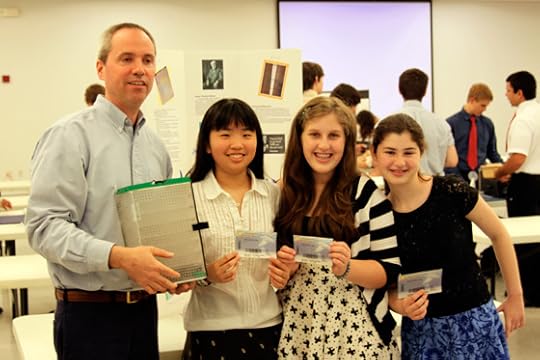
Honorable mention #2
“Technovators”
Heritage Middle School
Invented a solar powered food dryer
Great work student teams! Thomas Edison would be proud.
To see more pictures from this event, visit and ‘like’ our Facebook page. Stay tuned for an expanded invention challenge next year.
 “Hell, there are no rules here – we’re trying to accomplish something.”
“Hell, there are no rules here – we’re trying to accomplish something.”Time ® is a registered trademark of Time Inc.
May 14, 2013
Thomas Edison and the first Electronic Patent
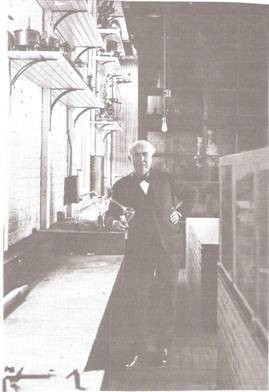
Edison Holding an Edison Effect Tube (West Orange)
The science books today call it “thermionic emission” [the conversion of heat directly to electricity], but its original name was the Edison effect. It began with the emission of electrons from a hot light bulb filament, soon to become the very basics of vacuum tubes, which led to practical radio, electronic signal amplification, telecommunications, and TV. Vacuum tubes were replaced later in the 1960s by transistors—and then even later, integrated circuits. All this led to today’s ubiquitous computers and hand held devices. It all started with Thomas Edison.
While working to improve the longevity of his light bulb filaments (1882), Edison and his staff were noticing a certain blackening of early light bulbs. Experimenting, Edison inserted another wire into the light bulb, above the filament itself. When the light bulb was switched on, this configuration allowed a current to flow from the hot filament thru the vacuum inside the bulb, to the newly inserted wire. Edison soon learned he could control the thru vacuum flow by how much positive voltage he applied to the wire.
Named the Edison effect, what Edison really discovered was that “electrons” could be literally boiled off the hot filament and collected by the wire. Electrons were not specifically named as such at that time, and would not be so until 1897 (J. J. Thomson). Edison had stumbled upon the modern electronic age.
Although not able to comprehend the vast potential and theory behind his discovery, he did file a patent that used this finding in what has come to be known as the first electronic patent, “Electrical Indicator”, U.S. patent 307,031–November 15, 1883. The electrical indicator was envisioned by Edison to be used to detect changes in voltage within an electrical distribution network. At this time he was working on his Pearl Street electric distribution demonstration system as well as other similar projects, so it is natural he saw an application here first.
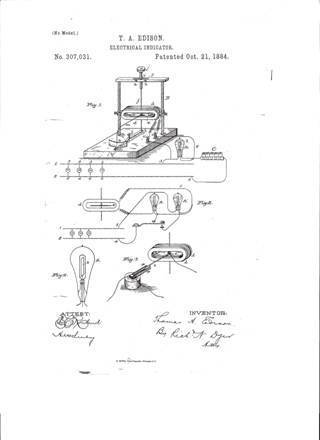
Edison Patent Diagram
John Ambrose Fleming (1904) and Lee De Forest (1906) would later build upon Edison’s discovery and introduce the diode and triode vacuum tubes respectively, setting the stage for modern radio and electronics. On Christmas Eve, 1906, Reginald Aubrey Fessenden [later to become a giant in electronics and a very famous inventor], made the first radio broadcast. Fessenden had worked at Edison’s legendary West Orange labs from 1886-1890.
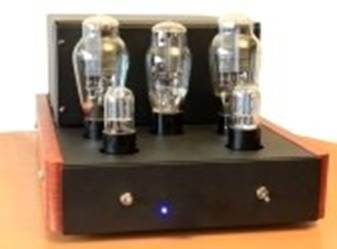
Vacuum Tube Amplifier
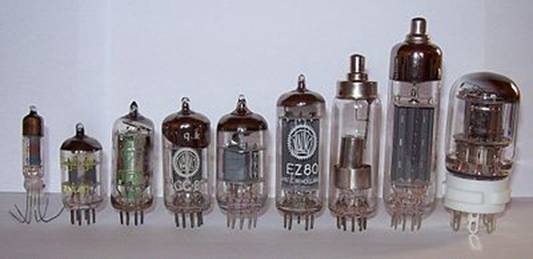
Miniature Vacuum Tubes
In a way, Fessenden closes the loop from Edison’s thermionic emission discovery in 1882. In just about one generation, 24 years, Edison’s discovery becomes an integral part of what would become the greatest industrial revolution, the telecommunications revolution…still robust and rapidly evolving today.
 “The man who doesn’t make up his mind to cultivate the habit of thinking misses the greatest pleasure in life.”
“The man who doesn’t make up his mind to cultivate the habit of thinking misses the greatest pleasure in life.”Time ® is a registered trademark of Time Inc.
April 30, 2013
Fuel Cells with a Thomas Edison Connection
So here is the deal. These devices make very little pollution, and can be a way to reduce our use of foreign oil. They work on clean domestic sources of fuel like natural gas; have high efficiency, and can provide electrical power to almost anything from vehicles to buildings. Know what it is? It is fuel cells, a technology that has been known since the 1840s, and achieved notoriety in the space program and lunar missions.
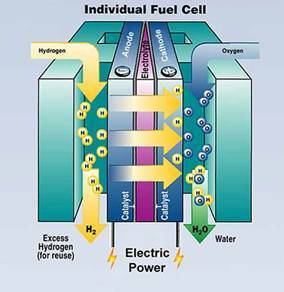
Fuel Cells with a Thomas Edison Connection
A fuel cell is a device that produces electricity through a chemical reaction. A source fuel and an oxidant are the two reactants, but the source fuel must contain hydrogen in some form, either, pure hydrogen or simple hydrocarbons like methane (natural gas), propane or methanol. Usually, fuel cells are run on methane and oxygen from the air to produce electricity, heat, and byproducts like water vapor and very small amounts of nitrous oxide. Fuel cells are technological cousins to batteries…..deriving electric power from complex chemical activity known as oxidation-reduction reactions. Unlike a battery, a fuel cell’s chemical reactants are external, and as long as these reactants are supplied, the fuel cell generates electricity. You could say a fuel cell is re-fueled, rather than a battery which is re-charged.
Fuel cells have been used to power homes and commercial applications in sizes generally ranging from about 5 kW to 250 kW. Larger applications in the 1 to 10 MW size range have also been installed. Currently, high costs and long-term lifetimes of these devices keep them from seeing widespread application, but their potential is huge as R&D continues aggressively on these potentially game-changing devices. This is an alternate energy technology with the capability to work 24/7/365. Recent huge finds of natural gas locked in reachable shale rock formations could make this an ideal way to capitalize on this cheap, abundant, clean and domestic new fuel resource.
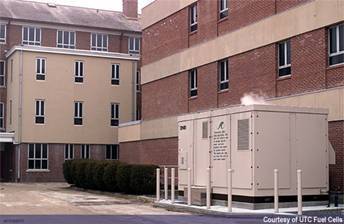
South County Hospital Fuel Cell (Rhode Island)
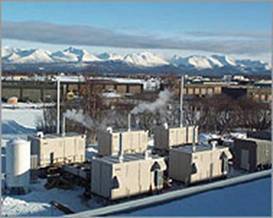
USPS Installation in Anchorage, AL
Imagine this. Many homes have a natural gas pipe already entering their home. This pipe could supply a fuel cell that provides electricity and heat to the home; and of course air conditioning. Since the pipes come in via underground, there is very little chance that weather is going to knock out the electric supply to the home as often happens. How about a fuel cell powered car? Fuel cell powered buses are already performing useful service. Fuel cells can be made quite small as well, to provide power to computers and other sensitive electronic devices.
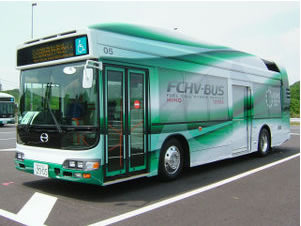
Fuel Cell Powered Bus
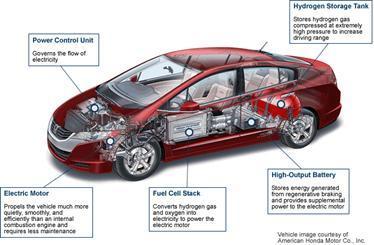
Major Components of a Fuel Cell Car
Thomas Edison performed early work in trying to convert coal directly into electricity. Although he received several patents on this technology, practical application eluded him; nevertheless, he is credited as an early experimenter in the history of fuel cells. This work is discussed in the Edison Papers Project.
Editor’s Deep Dive:
http://en.wikipedia.org/wiki/Fuel_cell
http://seekingalpha.com/article/294466-will-fuel-cells-replace-battery-powered-cars
http://www.fcbt.gatech.edu/
http://www.plugincars.com/exclusive-daimler-director-fuel-cells-and-battery-drive-explains-cautious-approach-106931.html
http://edison.rutgers.edu/fuelcell.htm
 “My desire is to do everything within my power to free people from drudgery and create the largest measure of happiness and prosperity.”
“My desire is to do everything within my power to free people from drudgery and create the largest measure of happiness and prosperity.”Time ® is a registered trademark of Time Inc.
April 15, 2013
Thomas Edison and Geothermal Heating
They are not obvious like other alternate energy technologies-no spinning wind turbine blades or cool solar panels on the roof of a home-but they get the job done and save energy and costs for the consumer. We are talking about geothermal heating systems.
Heat from the earth is collected and used to heat the home-see photo below. Coils filled with water or antifreeze are circulated via drilled wells or direct burial around the home [about 6-8 feet underground in a trench system] to collect low grade heat in the earth. This low grade heat is “bumped-up” with an electrically powered, efficient, heat pump to make it compatible with the temperatures required to heat the home. Check it out at You Tube.
Geothermal coils trenched into the earth.
[source: www.completesyscorp.com/hvac_Geotherm...]
Photo- Geothermal Loop Field for Residential Home
[source: Wikipedia Article]
[chart source: http://www.tristategt.org/NewsCenter/...]
Thomas Edison and his lovely wife Mina shared a love for nature—she for the biological world, conservation, bird-watching, and horticulture; and he for the use of natural products in his inventions, and a fondness for natural earth energy sources. This life-long natural credo, along with the need to control the temperature and humidity swings in their historic and spacious mansion at Glenmont, motivated the 2005 renovation of their beautiful twenty-nine and-a-half room Queen Anne Victorian style home [see photo] to include a geothermal heating and cooling system.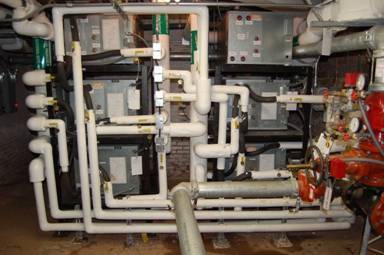
Geothermal Heating System and Heat Pumps in Glenmont Basement
In the summer, heat is extracted from the house using five heat pumps with a sixth functioning as a spare. The extracted heat is deposited deep into the mountain soil surrounding the home via a closed-loop water distribution system. Each well is approximately 5 inches in diameter, and 350 feet deep. The well field is about 150 feet away from the house. In the winter, this stored heat is brought back into the house to help warm the structure. The earth acts like an energy bank from which deposits and withdrawals may be made.
Keep an eye out for this technology to make big inroads into the nation’s energy mix. Like Edison, it’s a sure-fire winner, and a way to keep our environment green! According to the U.S. Dept. of Energy, about 50,000 geothermal heating systems are installed each year……with an estimated total of about one-million systems in operation.
www.reddawn.com/featart11-98.html
fli.hws.edu/pdf/GEOTHERMAL%20HEATING%20AND%20COOLING.pdf
http://www.toolbase.org/Technology-Inventory/HVAC/geothermal-heat-pumps
http://www.energysavers.gov/your_home/space_heating_cooling/index.cfm/mytopic=12640
“I never did a day’s work in my life, it was all fun.”
Time ® is a registered trademark of Time Inc.
April 1, 2013
Thomas Edison’s Glenmont Home – a Showcase for Home Illumination
The main way to illuminate homes in the second half of the 1880s was through the use of oil lamps; or if the home was in the vicinity of a gas manufacturing plant, then gas became the fuel of choice for lighting the house. Much like we use natural gas today in our homes for heating, cooking and making hot water, at one time it was used to illuminate our homes. Open flames of gas were common in homes in urban areas, where gas manufacturing plants were usually located.
Here is how it worked. Coal was burned slowly at a gas manufacturing plant in what is known as a coking process (charred slowly in an oxygen starved environment). This drove off methane, the primary constituent of natural gas. Such low grade methane [about 500 Btu per cubic foot] was stored in large, cylindrical, steel containers that still may dot some urban area landscapes. This gas under pressure was then distributed to nearby homes and businesses for their use. If you lived in a suburban or rural area, you used oil lamps, maybe even candles, when the sun went down.
Large homes owned by people of means could rely on another method for gas illumination, a private system where a carbureted vapor fuel was made on-site and this vapor drawn into the home and used for illumination. One such system was called the Springfield Gas Machine, often used in large Victorian style homes of the period, including the Edison home, Glenmont, built in 1882. In the photo below, one sees the lovely Glenmont, a Queen Anne Victorian style mansion, with 29 ½ rooms.
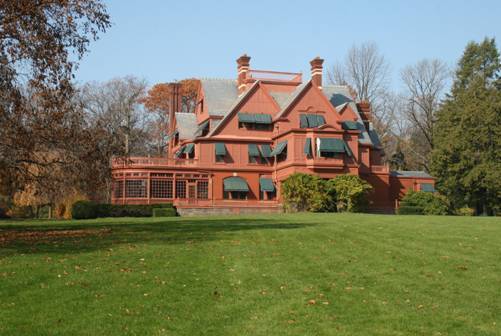
Edison’s Glenmont home
About 100 feet away from this home an underground vault was located that contained a gasoline vaporizing system that connected with an air pump in the basement via underground piping. A large stone weight was cranked to a certain height in the basement of the home and this weight via mechanical gearing turned the centrifugal air pump, drawing gasoline vapors into the home to be used for illumination as needed. The diagram below shows the layout of the system. In the basement of Glenmont, one still sees the air pump and weight system remaining, along with the piping that led to the underground vault.
Edison purchased Glenmont in 1886, and soon bypassed the gasoline vapor system sometime in 1887/88, electrifying his beautiful home. The gasoline vapor system was most likely installed by the original famed architect of the home, Henry Hudson Holly. Edison installed underground electric lines from his nearby West Orange Labs-about ½ mile away. The massive home at one time had 500 light bulbs in service. Several large ceiling chandeliers originally designed for gas illumination have been converted to electricity and are in-service today at the mansion for visitors to see.
![Original gas light chandelier at Glenmont [the library], long ago converted to electricity. Each bulb would have been an open flame.](https://i.gr-assets.com/images/S/compressed.photo.goodreads.com/hostedimages/1380962614i/3555495.jpg)
Original gas light chandelier at Glenmont [the library], long ago converted to electricity. Each bulb would have been an open flame.
 “The three things that are most essential to achievement are common sense, hard work and stick-to-it-iv-ness…..”
“The three things that are most essential to achievement are common sense, hard work and stick-to-it-iv-ness…..”Time ® is a registered trademark of Time Inc.
March 19, 2013
Thomas Edison’s R&D Legacy and Economic Impact
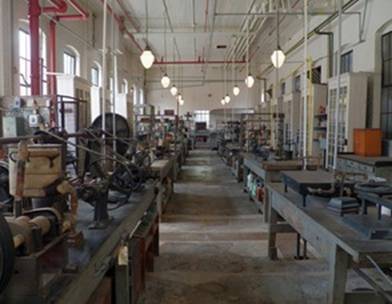
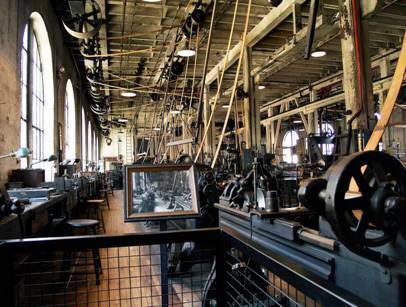 Every Fortune 500 company has one, or has ready access to similar facilities—R&D labs where new product development gestates the next new big things for companies to commercialize. How much R&D is done is a good indicator of the vibrancy of our economy, and a company’s outlook for the future. Such labs are the direct descendents of the “invention factory” that Thomas Edison honed to a fine art at his legendary West Orange Labs. At West Orange, Edison accrued the majority of his patents; carefully documenting and protecting his intellectual property. His notebooks are chock-full of tests, ideas, schematics, and experimental results used to support his many patent filings, and to serve in defense against those who tried illegally to move in on his accomplishments.
Every Fortune 500 company has one, or has ready access to similar facilities—R&D labs where new product development gestates the next new big things for companies to commercialize. How much R&D is done is a good indicator of the vibrancy of our economy, and a company’s outlook for the future. Such labs are the direct descendents of the “invention factory” that Thomas Edison honed to a fine art at his legendary West Orange Labs. At West Orange, Edison accrued the majority of his patents; carefully documenting and protecting his intellectual property. His notebooks are chock-full of tests, ideas, schematics, and experimental results used to support his many patent filings, and to serve in defense against those who tried illegally to move in on his accomplishments.
We know now how important intellectual property [IP] is for our nation. In a 2012 U.S. Dept. of Commerce Study that examined 75 IP-intensive industries that together directly and indirectly employed 40 million workers, their findings showed IP-intensive industries accounted for $5.0 trillion in value added, representing 35.5% of U.S. gross domestic product in 2009. Fully 1/3 of our national economy is driven by intellectual property. Additionally, in 2010, merchandise exports of IP-intensive industries totaled $775 billion, equating to 60.7% of total U.S. merchandise exports. The creativity of our nation has great economic value both here and abroad-something Thomas Edison viscerally understood.
Take a look at the recent record of national R&D expenditures used to support the creativity of major organizations in the private, federal, public, and academic sectors:
2012 – $436 Billion
2011 – $427
2010 – $415
2009 – $400
2008 – $403
2007 – $377
2006 – $350
2005 – $325
These numbers exceed the annual revenue of our biggest national corporations.
All this R&D-fueled creativity manifests itself in our patent system. Look at the table below chronicling the number of patents [one powerful form of IP] awarded to U. S. inventors since the creation of the U.S. Patent Office in 1792 [the U.S. Constitution empowered Congress to establish such an office].
1792 – 0 (Doubling Time)
1911 – 1,000,000
1935 – 2,000,000 (143 years)
1961 – 3,000,000
1976 – 4,000,000 (41 years)
1991 – 5,000,000
1999 – 6,000,000
2006 – 7,000,000
2011 – 8,000,000 (35 years)
Notice how the doubling time for U.S. patents issued is decreasing. This is exponential growth showing no sign of abating; which is exactly what you would expect as more countries vigorously engage in globally competitive business activities. Another way to interpret the table above is….over 70% of the U.S. patents ever issued, did so since 1935. Edison had 1093 domestic patents; and his powerful charisma inspires yet today many other inventors young and old.
What vision Thomas Edison possessed to link commercial R&D and economic growth. Here is a 2012 quote about how valuable Edison is to our world. According to Ted Landphair, Voice of America:
“In fact, it is said of him that one quarter of all the jobs – not just in the United States but in the world – can be traced to something he thought of and made in the late 19th and early 20th centuries.”
Thanks, Tom!
 “I find out what the world needs. Then I go ahead and try to invent it.”
“I find out what the world needs. Then I go ahead and try to invent it.”Time ® is a registered trademark of Time Inc.
March 7, 2013
The MOOCS are Coming, The MOOCS are Coming!
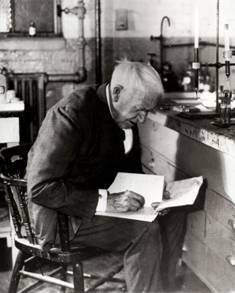
The MOOCS are Coming, The MOOCS are Coming!
Yes they are, and with the potential to redefine education. A product of the Internet revolution, MOOCS are “Massive, Open, On-line Courses” designed to reach as many students, formal and informal, as possible. Think of them as super webinars for the world, distance learning on steroids.
Universities are experimenting with them as a way to reach larger audiences, leveraging their intellectual capital on campus; and as a potential way to reduce the spiraling costs of on-campus education. Big name schools like Stanford University, Princeton University, University of Pennsylvania, City University of New York, The University of Michigan, MIT, Harvard and others are developing delivery platforms with strategic partners. Even high schools are potential application areas for MOOCS.
What could this mean for the traditional bricks and mortar, red brick schoolhouses of yesteryear? Might this be a way to reduce high school costs at all levels? What could this mean for how our “kids” gain socialization through the interactions of fellow students? Certainly such questions remain to be answered, just like they did when the Internet began re-defining how business does business. Big change, gale force winds, could be coming to our education system.
Because of many potential learners at once, i.e. very high student teacher ratios, MOOCs can use several approaches for feedback and interaction; such as peer-review, group collaboration or online assessments, quizzes, and exams; and in the future there is likely to be even more ways for on-line students to interact.
Thomas Edison, a devoted and disciplined life-long learner would certainly applaud this technology. To him it would be a massive way to digest new information and keep a-pace with changing times. Remember, this was the man who thought so much about information being the key to invention/innovation/entrepreneurship that he put his business office in his library. Imagine what this great man could have done with an Internet connection! Imagine what it would be like if we could teach many kids around the world, through MOOCS, about inventing like Edison. Go MOOCS!
Editor’s Deep Dive
http://net.educause.edu/ir/library/pdf/PUB4005.pdf
http://www.forbes.com/sites/collegeprose/2013/01/28/moocs-a-college-education-online/
http://www.washingtonpost.com/blogs/answer-sheet/wp/2013/01/27/irrational-exuberance-over-moocs/
 Thomas Edison – Man of the Millennium – said … “I find out what the world needs. Then I go ahead and try to invent it.”
Thomas Edison – Man of the Millennium – said … “I find out what the world needs. Then I go ahead and try to invent it.”Time® is a registered trademark of Time Inc.
March 4, 2013
Technology Thomas Edison Would Love – New Light Bulbs
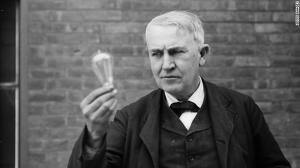
When you think about Thomas Edison, it pays to keep in mind his personal philosophy:
Think out of the box
Be entrepreneurial … take risks
Fail your way to success
Success demands that you improve your products
The last one is very important because it shows that great inventors like Edison knew inherently that technology does not stay stagnant. It must change and evolve to meet customer wants and needs.
Were Thomas Edison alive today he would be working on changes to his long-standing electric light bulb, even LEDs and those “curly-cue” CFL florescent light bulbs. In fact, Edison pioneered florescent light bulbs. Over his life, his incandescent light bulbs went through quite a series of changes as both the technology and consumer preferences changed. Why wouldn’t he be in there competing today, looking for and implementing more efficient, longer life, cheaper bulbs?
Look at all the light bulb changes going on. New halogen incandescent bulbs [below] can produce a nice warm glow like the original Edison light bulbs, while using 25% to 30% less electricity. These bulbs also can be made to dim.
CFLs are the currently touted heir apparent to the light bulb lineage, but their mercury content makes them a candidate for long-term disposal problems. Many homes are candidates for this bulb technology, and its price is reasonable.
It’s all about first cost, expected lifetime, and efficiency, the measures of value in the coming light bulb wars. Traditional incandescent bulbs cost pennies to buy, maybe 25-50 cents, and last a reasonable amount of time. CFLs can be bought for perhaps $2 to $3 each, and last as much as ten times as long as traditional incandescent bulbs. Halogen bulbs are expected to cost around $4 to $5 initially, which will eventually decrease as more folks use them; and expected to have a lifetime about 2-3 times as long as older bulbs. So the consumer is going to have a wide choice in the future.
LEDs or light emitting diodes could represent remarkable efficiency gains but are quite expensive [about $100 each]; and are in need of significant improvements before becoming a serious option for the home market. Things could change fast with such a big market opportunity. There are likely to be many incremental changes to existing types of bulbs in the interim, as the newer technologies fight for room in this billions of dollar a year market.
Edison’s outstanding design lasted for over 120 years. Don’t count the venerable incandescent bulb out yet. New designs may look just like it, but have some new innovations deep inside. The market as always will dictate finally the outcome, just as Edison the entrepreneur firmly believed.
Editor’s Deep Dive
http://www.familyhandyman.com/DIY-Projects/Lighting/Home-Lighting/the-pros-and-cons-of-halogen-bulbs/View-All
http://www.nytimes.com/2009/07/06/business/energy-environment/06bulbs.html?_r=1
http://www.ehow.com/about_5426256_halogen-lights-vs-incandescent.html
http://www.homedepot.com/webapp/catalog/servlet/ContentView?pn=KH_BG_EL_Choosing_CFL_Light_Bulbs
http://www.mnn.com/earth-matters/translating-uncle-sam/stories/cfl-vs-incandescent-battle-of-the-bulb
 Thomas Edison says, “I find out what the world needs. Then I go ahead and try to invent it.”
Thomas Edison says, “I find out what the world needs. Then I go ahead and try to invent it.”Time ® is a registered trademark of Time Inc.
February 18, 2013
Solar Energy – the Fabric of Your Life
Some really cool solar “thread” is being developed at Penn State University. Currently, researchers there believe these “threads”- actually fiber optic strands- can be as long as about 10 meters in length, and thinner than a human hair. Each strand is a long solar cell integrated into a fiber optic structure. By itself, it can convert solar energy to electricity; and these strands/fibers can be woven into flexible fabric that can collect/convert even more solar energy into electricity.
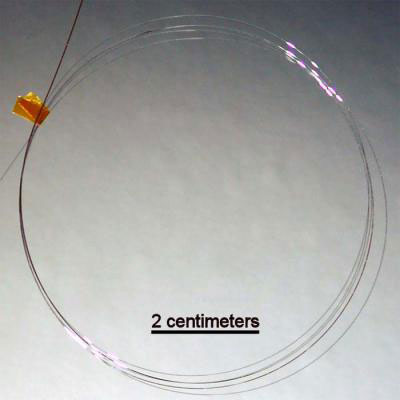
Penn State University’s Solar Cell Fiber/Strand/Thread
According to John Badding, project leader, and a professor of chemistry at Penn State University….”Long, fiber-based solar cells give us the potential to do something we couldn’t really do before: We can take the silicon fibers and weave them together into a fabric with a wide range of applications such as power generation, battery charging, chemical sensing, and biomedical devices.” This material could then be connected to electronic devices to power them and charge their batteries. This would be of special interest to the military and other highly portable applications.
Another advantage of this technology is its ability to better respond to incoming light. A typical solar cell has only one flat surface, and that is what responds to the ambient solar radiation. If the light does not strike it at the right angles, that solar radiation is lost. A flexible, curved solar-cell fabric would not be as dependent upon where the light is coming from or where the sun is in the sky, thus making for more time during the day in which solar energy can be collected and converted to electricity.
Imagine where else such fabric might be employed to convert solar energy into electricity. You might be able to sit in a sunny field, connect your jacket to your cell phone and use it all afternoon without drawing down your battery; or maybe even run your laptop!
 “I’d put my money on the sun and solar energy. What a source of power! I hope we don’t have to wait until oil and coal run out before we tackle that. I wish I had more years left.”
“I’d put my money on the sun and solar energy. What a source of power! I hope we don’t have to wait until oil and coal run out before we tackle that. I wish I had more years left.”Time ® is a registered trademark of Time Inc.
Harry T. Roman's Blog
- Harry T. Roman's profile
- 2 followers


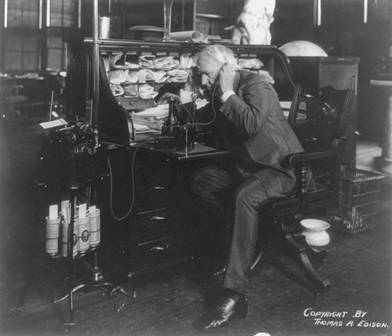

![Geothermal coils trenched into the earth. [source: www.completesyscorp.com/hvac_Geothermal.html]](https://i.gr-assets.com/images/S/compressed.photo.goodreads.com/hostedimages/1381555219i/5025753.jpg)
![Photo- Geothermal Loop Field for Residential Home [source: Wikipedia Article]](https://i.gr-assets.com/images/S/compressed.photo.goodreads.com/hostedimages/1381555219i/5025754.jpg)
![[chart source: http://www.tristategt.org/NewsCenter/NewsItems/Ground-SourceHeatPumps.cfm]](https://i.gr-assets.com/images/S/compressed.photo.goodreads.com/hostedimages/1381555219i/5025755.jpg)

